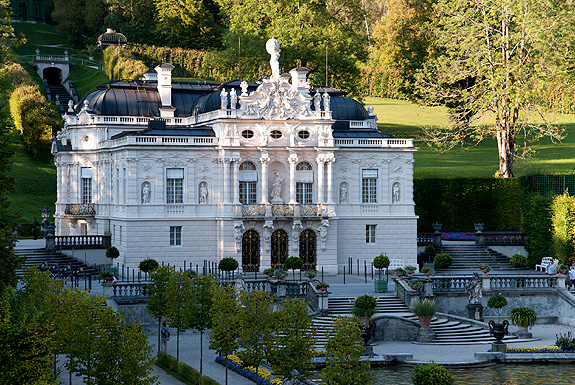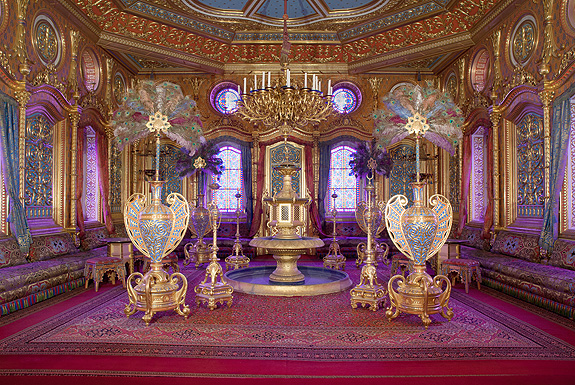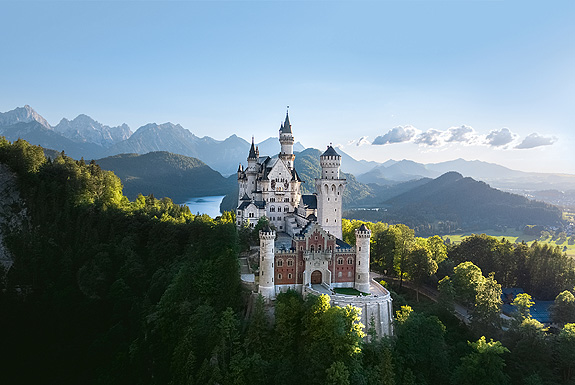Main information:
King Ludwig II of Bavaria
Ludwig II and his castles
Apart from the sights on Herrenchiemsee Island the Bavarian Palace Administration also cares for the following buildings, all of them commissioned by King Ludwig II.
Linderhof Palace
With this palace, finished in 1878 and the only one Ludwig II completed and actually lived in, the Rococo age experienced a revival. The richly ornamented façade of this relatively small palace conceals a world of opulence, radiant with gold and gleaming mirrors, with wall hangings and paintings, velvet and silk, crystal chandeliers, lapis lazuli, malachite and porcelain.
The main features of the beautifully landscaped park are the St Anna Chapel, the "Königshäuschen" (Royal Lodge), the ancient Royal Lime Tree with a platform where the king sometimes took breakfast, the Moorish Kiosk with the Peacock Throne, the Moroccan House, Hunding's Hut and the Hermitage of Gurnemanz. An "open sesame" rock leads to the artificial Venus Grotto with a waterfall and lake.
Further information about Linderhof Palace you can find on www.schlosslinderhof.de
King's House on Schachen
Ludwig II selected a unique setting with a view of the Zugspitzmassif for a mountain lodge.
The wooden building with its rather modest exterior conceals a hall on the upper floor furnished with Oriental splendour. The king sought the seclusion of the mountains to celebrate his birthday and his name day in the lavishly decorated Turkish Hall furnished with divans and a fountain.
The King's House can only be reached on foot, either from Elmau or Garmisch-Partenkirchen.
Further information about the King's House on Schachen you can find on www.schloesser.bayern.de
Neuschwanstein Castle
Ludwig II spent a large part of his childhood in Hohenschwangau Castle. Later he built Neuschwanstein, probably the most famous of his constructions, close by in a highly dramatic location on a cliff above the Pöllat Gorge.
The interior is based on German chivalric legends and the operas of Richard Wagner. The Singers' Hall, modelled on the Wartburg near Eisenach, is decorated with scenes from the legends of Parzival and the the Holy Grail. The blue and gold Throne Room, inspired by Byzantine basilicas, is fifteen metres high and extends through two floors. It was never used.
Further information about Neuschwanstein Castle you can find on www.neuschwanstein.de





Facebook Instagram YouTube